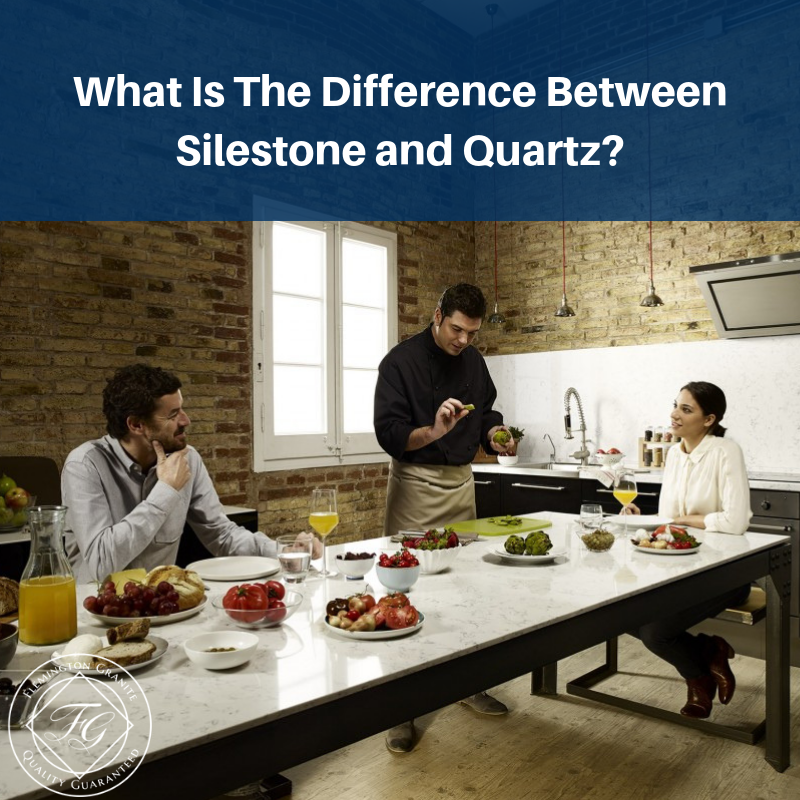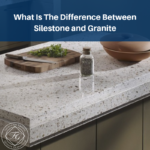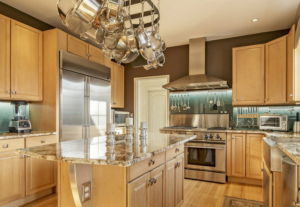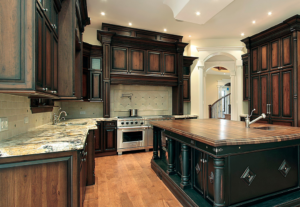
If you want to know the difference between Silestone and quartz, you won’t have to look far and wide as there are really none. Silestone is simply a brand name for quartz materials. In fact, many quartz aficionados interchange the word Silestone for quartz.
Silestone Consistency
Silestone is a distinctive manufactured quartz product. It consists of natural quartz crystals and other materials that include polyester resin, color factors, and properties that inhibit the growth of bacteria and microorganisms. The binding of the quartz with the polyester resin is what holds the crystals intact and produces its smooth, sparkling and stylish surface. Though Silestone is an engineered material, it is comparable to granite and marble, and it is brighter overall than the other two because of its quartz crystal content.
Silestone Uses
Silestone is usually used in countertop production for kitchens and bathrooms, but it can also be made for floors, sink basins, shower enclosure trays, and decorative wall coverings. Silestone is best suited for homes that are contemporary, new and modern in design. It also coordinates well with rustic, vintage and traditional American and Scandinavian designed kitchens. Whatever the size of the area to be covered in a kitchen, bathroom or other areas, Silestone works extremely well in adapting to and accommodating most any space.
Silestone Advantages/Disadvantages
Silestone has a number of advantages over other natural countertop materials. It is durable and non-porous as well as resistant to stains, scratches, bacteria, and viruses. Because it is dense and non-porous, sealing is unnecessary, which is not usually the case with materials like granite and other natural stone materials. In addition, Silestone is nearly maintenance free and only requires minimal cleaning. A quick wipe with a mild household cleaner or soapy water keeps overall cleaning to a minimum and should be done on a regular basis. Any spills should be removed as quickly as possible, but no hard scrubbing or pressure is needed to do that.
Silestone’s surface is able to tolerate oils, vinegar, lemon juice, wine, coffee, and even cosmetic spills, but in cleaning any stains, the use of harsh or abrasive cleaners and any scratchy sponges or pads should be avoided. Stubborn stains, like hard water rings or another build-up, can be treated with a paste of baking soda and white vinegar. Allow the paste to remain from 10-20 minutes and remove it with cold water and a non-abrasive sponge or soft pad. Dry with a soft cloth.
One thing to avoid with Silestone is dropping heavy or sharp objects on it. Though Silestone is resistant to most anything that may be dropped on it, major force can likely cause cracks and noticeable scratches, which can lead to replacement or major repairs. Also, it is advisable to use cutting boards for food preparation and hot pads, trivets and coasters should be used for any placement of hot cookware, pans on other hot items on countertops. Though Silestone is resistant to heat and scorching, it is not totally free from heat damage. Rings can appear as well as surface color changes, so it is advisable to use protection to stop any permeation of heat from pots, pans and other heat retaining utensils.
Now that you know Silestone and quartz are very much the same, you may want more information as to how Silestone will look in your house and how well it will perform for your situation. If you are interested in finding out more about Silestone, complete the contact form and a Silestone expert will get back to you with the information you need. A sleek, shiny and high-end Silestone countertop just might be part of your kitchen’s future.






